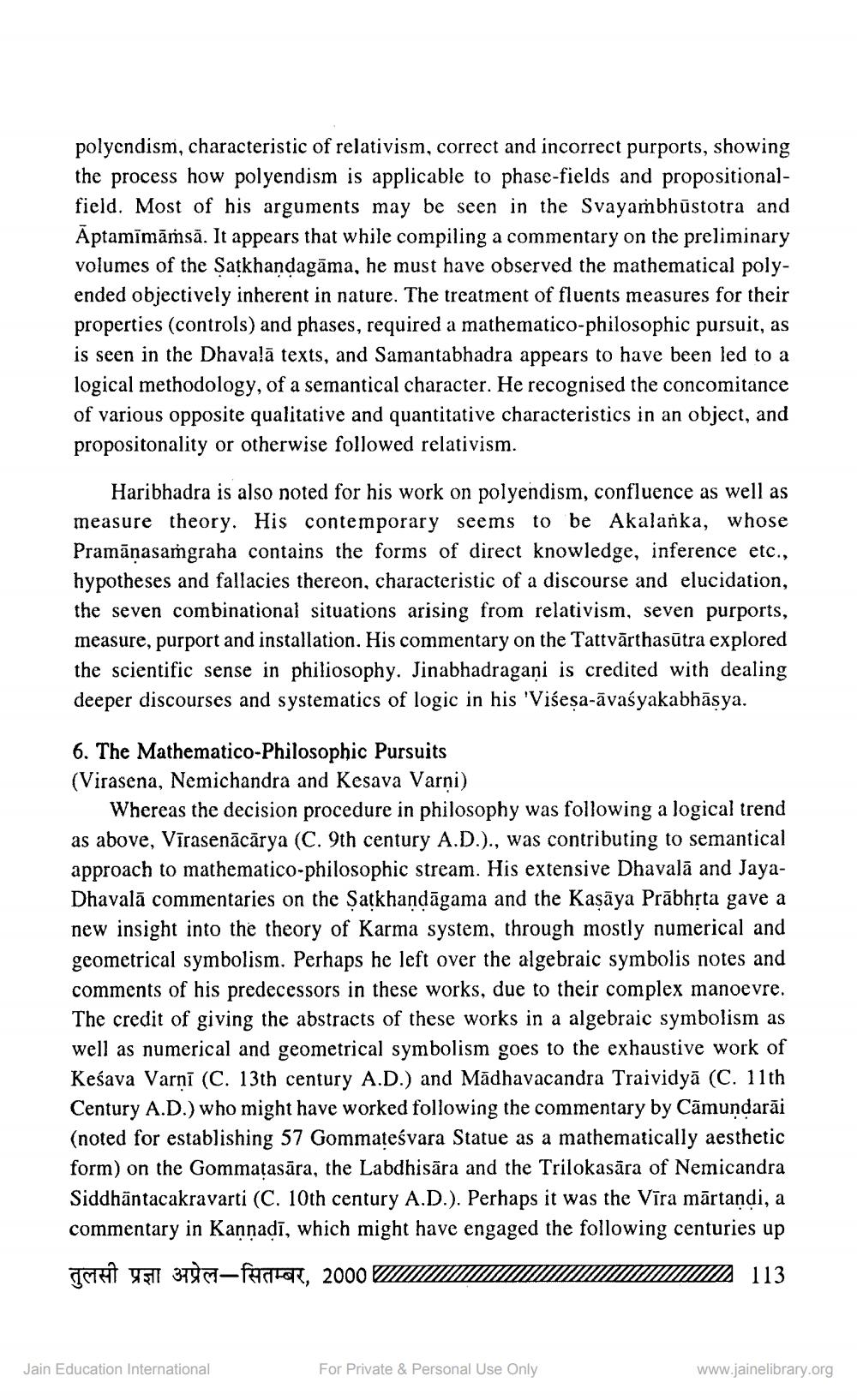________________
polyendism, characteristic of relativism, correct and incorrect purports, showing the process how polyendism is applicable to phase-fields and propositionalfield. Most of his arguments may be seen in the Svayambhūstotra and Āptamīmāmsā. It appears that while compiling a commentary on the preliminary volumes of the Satkhandagāma, he must have observed the mathematical polyended objectively inherent in nature. The treatment of fluents measures for their properties (controls) and phases, required a mathematico-philosophic pursuit, as is seen in the Dhavalā texts, and Samantabhadra appears to have been led to a logical methodology, of a semantical character. He recognised the concomitance of various opposite qualitative and quantitative characteristics in an object, and propositonality or otherwise followed relativism.
Haribhadra is also noted for his work on polyendism, confluence as well as measure theory. His contemporary seems to be Akalanka, whose Pramāṇasaṁgraha contains the forms of direct knowledge, inference etc., hypotheses and fallacies thereon, characteristic of a discourse and elucidation, the seven combinational situations arising from relativism, seven purports, measure, purport and installation. His commentary on the Tattvärthasūtra explored the scientific sense in philiosophy. Jinabhadragani is credited with dealing deeper discourses and systematics of logic in his 'Viśeṣa-avaśyakabhāṣya.
6. The Mathematico-Philosophic Pursuits (Virasena, Nemichandra and Kesava Varni)
Whereas the decision procedure in philosophy was following a logical trend as above, Vīrasenācārya (C. 9th century A.D.)., was contributing to semantical approach to mathematico-philosophic stream. His extensive Dhavala and JayaDhavala commentaries on the Satkhaṇḍāgama and the Kaṣāya Prabhṛta gave a new insight into the theory of Karma system, through mostly numerical and geometrical symbolism. Perhaps he left over the algebraic symbolis notes and comments of his predecessors in these works, due to their complex manoevre. The credit of giving the abstracts of these works in a algebraic symbolism as well as numerical and geometrical symbolism goes to the exhaustive work of Kesava Varni (C. 13th century A.D.) and Madhavacandra Traividya (C. 11th Century A.D.) who might have worked following the commentary by Camundarai (noted for establishing 57 Gommatesvara Statue as a mathematically aesthetic form) on the Gommaṭasara, the Labdhisära and the Trilokasära of Nemicandra Siddhantacakravarti (C. 10th century A.D.). Perhaps it was the Vīra mārtaṇḍi, a commentary in Kannaḍī, which might have engaged the following centuries up तुलसी प्रज्ञा अप्रेल - सितम्बर, 2000
113
Jain Education International
For Private & Personal Use Only
www.jainelibrary.org




